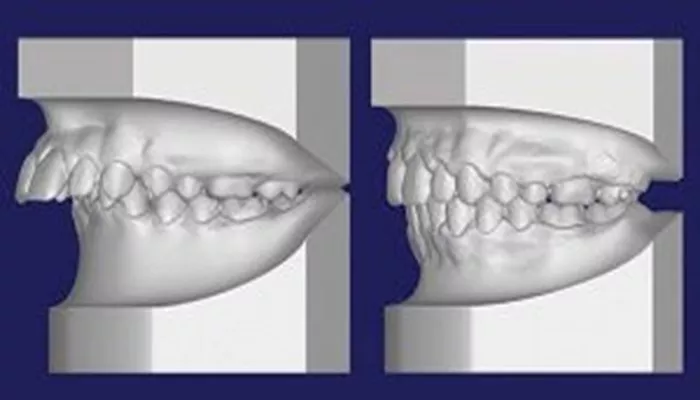Getting braces is an important step in achieving a beautiful and healthy smile. Before the actual braces are installed, several preparatory steps must be taken to ensure the best outcome for orthodontic treatment. This article will discuss what must be placed or done before installing braces, including the necessary examinations, treatments, and appliances. We will cover the importance of each step in the process, ensuring that patients understand what to expect.
Initial Consultation and Examination
Orthodontic Evaluation
The first step in the journey to braces is an initial consultation with an orthodontist. During this visit, the orthodontist will conduct a thorough evaluation of the patient’s teeth, jaws, and facial structure. This evaluation may include:
Clinical Examination: The orthodontist will examine the alignment of the teeth, the bite, and any potential issues such as crowding or spacing.
X-rays: X-rays help the orthodontist assess the position of the teeth and roots, the development of the jaw, and the presence of any underlying issues. Common types of X-rays used include panoramic X-rays and cephalometric X-rays.
Treatment Plan Development
After the evaluation, the orthodontist will develop a customized treatment plan. This plan outlines the type of braces needed, the estimated duration of treatment, and any other necessary procedures. The orthodontist will explain the plan to the patient and address any questions or concerns.
Dental Cleaning
Professional Teeth Cleaning
Before braces are placed, it is essential to have a professional teeth cleaning. This cleaning removes plaque and tartar buildup from the teeth, ensuring a clean surface for the brackets and bands. A clean mouth is crucial for the following reasons:
Better Adhesion: Brackets adhere better to clean teeth, ensuring that they stay in place throughout treatment.
Oral Health: Starting with clean teeth helps reduce the risk of cavities and gum disease during orthodontic treatment.
Orthodontic Separators
Placement of Orthodontic Separators
In many cases, orthodontic separators are placed before the installation of braces. These small rubber or metal devices create space between the molars to allow for the placement of orthodontic bands. The use of separators is necessary in the following situations:
When Bands Are Required: If the treatment plan includes orthodontic bands, separators must be used to create enough space for the bands to fit comfortably around the teeth.
Timing: Separators are typically placed one to two weeks before the braces are installed. This allows sufficient time for the teeth to move slightly apart, creating the necessary space.
Types of Separators
There are two main types of separators:
Elastic Separators: These are small rubber rings that fit between the teeth. They are commonly used and can be adjusted for comfort.
Metal Separators: These are made of metal and are used in specific cases where more space is needed. They are typically more durable but may be less comfortable than elastic separators.
Additional Treatments
Tooth Extraction
In some cases, tooth extraction may be necessary before placing braces. This step is typically required when:
Severe Crowding: If there is not enough space in the mouth for all the teeth, some teeth may need to be extracted to create room.
Impacted Teeth: If a tooth is impacted (not fully erupted), it may need to be removed to allow for proper alignment of the remaining teeth.
The decision to extract teeth is made based on the orthodontist’s evaluation and the patient’s specific needs.
Other Orthodontic Appliances
In certain cases, other orthodontic appliances may need to be placed before braces. These appliances can help prepare the mouth for braces by correcting specific issues. Examples include:
Palatal Expanders: These devices are used to widen the upper jaw if it is too narrow. They create more space for the teeth and help improve the bite.
Space Maintainers: If a baby tooth has been lost prematurely, a space maintainer can be placed to hold the space for the permanent tooth until it erupts.
Patient Education
Understanding the Process
Before getting braces, patients should be educated about the entire process. This includes:
What to Expect: Patients should know what will happen during the appointment when braces are placed, including how long the procedure will take and what sensations they may feel.
Post-Installation Care: Patients should be informed about how to care for their braces, including dietary restrictions and oral hygiene practices.
Setting Expectations
It is important for patients to have realistic expectations about their treatment. Orthodontic treatment can take several months to a few years, depending on the complexity of the case. The orthodontist should discuss the estimated timeline and any factors that may influence the duration of treatment.
Conclusion
Before installing braces, several important steps must be taken to ensure a successful orthodontic treatment. From the initial consultation and examination to the placement of separators and any necessary treatments, each step plays a vital role in preparing the mouth for braces. By understanding what must be done before getting braces, patients can feel more confident and informed about their orthodontic journey. Proper preparation leads to better outcomes, helping patients achieve the beautiful, healthy smiles they desire. If you have any questions about the process, don’t hesitate to reach out to your orthodontist for more information.
Related topics:

